Maya Stefania Wibling unpretentiously calls her practice honest coarse painting, as she elaborates on her unusual journey from North America to Europe, balancing figures and colour into harmonious compositions.
Considering the artist’s role from a societal and historical perspective, I see artists as interpreters of the time they live in, creators of objects and ideas that examine the world, society, human conditions and mentality.
Featured image: Studio view. Image courtesy Bente Foged Madsen.
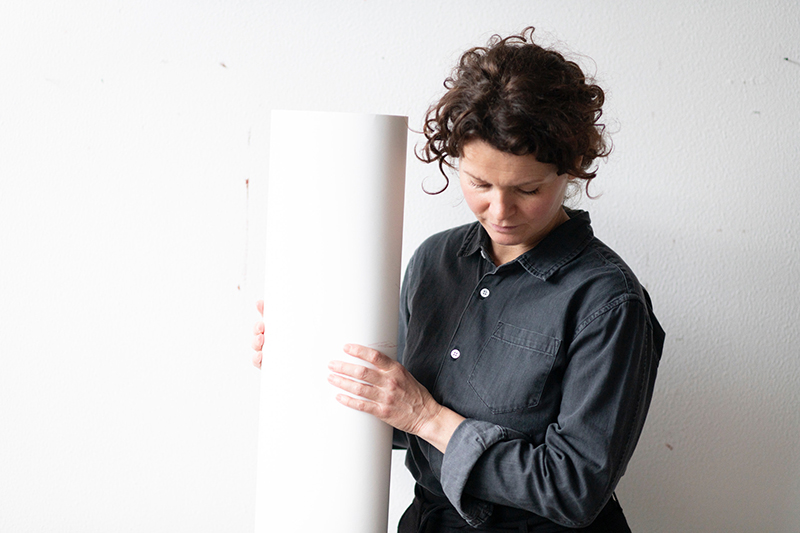
Portrait courtesy Bente Foged Madsen.
Please tell us a little about yourself, what brought you to the world of art and how did you start?
I did not take a straight path into the art world. I was studying Classical archaeology at the university in Aarhus and thought I was going to work in science and ancient culture, when my partner landed a job in California. It turned out to be a five year journey and during that period I started taking painting lessons at a small academy. My teacher was an old school plein air impressionist, which meant that we were studying outdoors, painting landscapes. I realised early on that I was not going to be a landscape painter, but I’m forever grateful for what I learned about technique and painting; to observe, to consider a focal point, build monochrome and add layers of colour. When we moved back to Denmark, I felt certain that I was going to pursue a professional life centred around painting. I enrolled in art school and started to apply for juried shows, got selected, and soon began working with a gallery.
What is the primary role of an artist? How do you describe yourself in the context of challenging people’s perspectives via your work and art?
I don’t think there is one primary role, it all depends on the perspective. Considering the artist’s role from a societal and historical perspective, I see artists as interpreters of the time they live in, creators of objects and ideas that examine the world, society, human conditions and mentality.
In contemporary art, it sometimes feels very out of date to be a painter since one can make art in so many new extended ways. However, in one way or the other, we have been painting since prehistoric times and I cherish painting as such a straightforward medium for human expression.
In the process of painting, the hand and mind merge and that is the beauty of it, revealing we are immaterial spirit and physical body. It seems we are more and more creatures of thought and technology where as being a painter is the opposite. It is very much a physical job with a physical outcome – a painting.
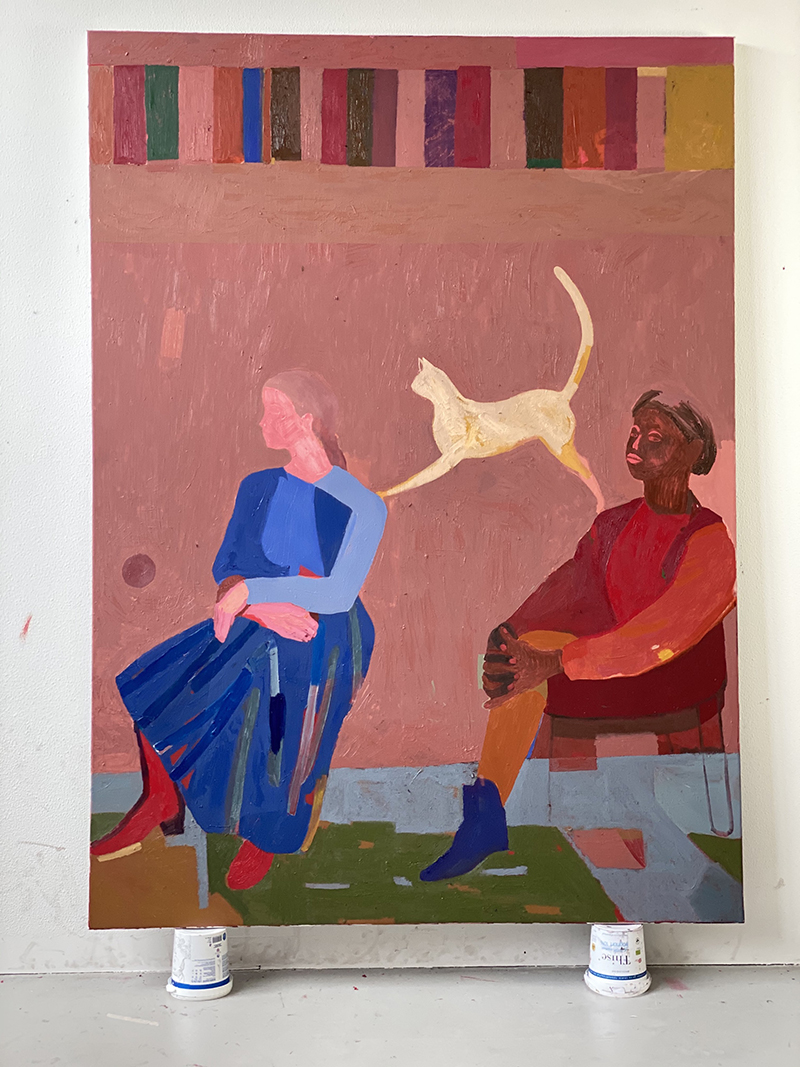
News from the studio. White cat bridging. Oil on canvas. 185 x 135 cm.
Whether I have a show or not, I always paint. I work continuously, aiming to achieve those moments of flow, in which I do my best paintings.
How do you deal with the conceptual difficulty and uncertainty of creating work?
Last year, I was lucky to receive a working grant from the Danish art foundation, which was as much a nice recognition, as it was a wonderful thing making room for contemplation. Whether I have a show or not, I always paint. I work continuously, aiming to achieve those moments of flow in which I do my best paintings.
Is there any topic lately that you would like to be mentored on?
It would be nice to be mentored on overcoming my naturally introverted personality. I am a shy person, specially when it comes to new people and situations. This can be a drawback in the art world, where you constantly have to promote yourself and your work.

Installation view: Latest show, Soil Moon Hand @kh7artspace Aarhus Denmark.
What would you call your style?
Honest coarse painting, balancing figures into harmonious compositions.
Let’s talk about the evolution of your practice over the years. Tell us about your commitment to your current medium.
My medium has always been painting and drawing. Within this I have been exploring many different expressions over time. For a period of time, I was purely making abstract work that was based on action and material. Later on, I combined the soft bodily strokes with concrete shapes and lines borrowed from geometry. These works were about balance and making compositions that were both handheld and with a sense of order.
I also spent a year making only circles. Mostly big works on paper, involving just a pencil – the idea behind these works, were thoughts about cycles and the interconnectedness of everything. I have now arrived at figurative painting, and find that my method finally matches my idea of story telling, and handling the material in a coarse way that I like so much. Recently, I have been incorporating my works into large wall-installations, which is something I’m keen to explore further.
What are you looking for when you look at other artists’ work? Which shows, performances and experiences have shaped your own creative process? Who are your maestros?
When I look at art, I appreciate it when I find honesty and for skill that is unpretentious. When the artist’s intention is clear, bold and sensitive at the same time. It is an added bonus if humour or something very mysterious is involved.
The work of Louise Bourgeois always knocks me out, as does the work of Venezuelan artist Jesús Soto – it seems their work holds immense truth, and at the same time – deep secrets. As for painters, I’m touched by the works of Danish painter, Anna Ancher (1859 – 1935) and I really respect the work of Russian painter, Natalia Goncharova (1881 – 1962).
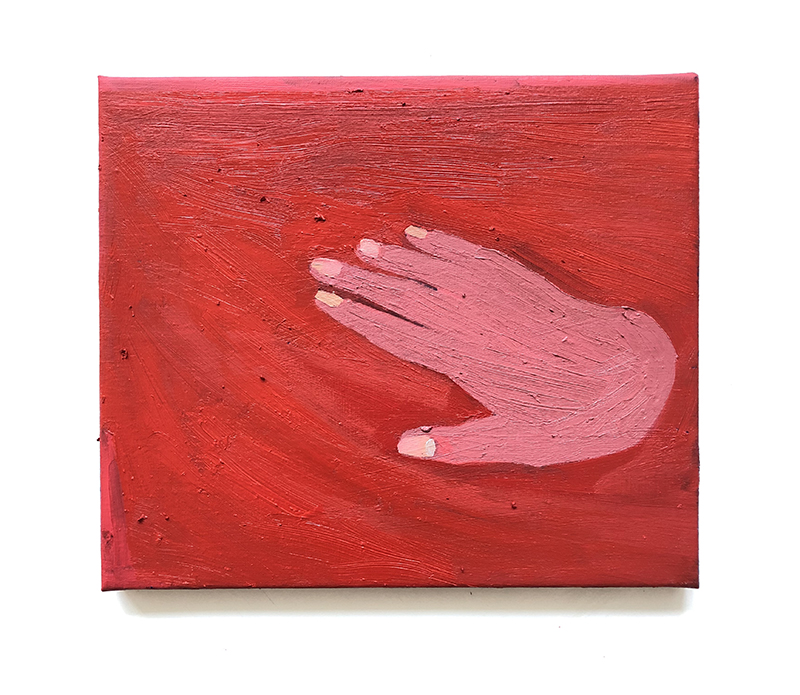
Soil Moon Hand. Oil on canvas. 30 x 35 cm.
What was your first sale? Do you handle the commercials yourself or is it outsourced to a gallery/agent
I think my first real sale was a guy who bought a painting as a wedding present. It is a long time ago. Shortly after I graduated from the art academy I got involved with a gallery, which in hind sight was a bit too early – I wish I knew then, what I know today.
It takes a lot of time to evolve as an artist and land a language that is really confident and your own. Today I handle sales myself and am ready to work with good galleries as well.
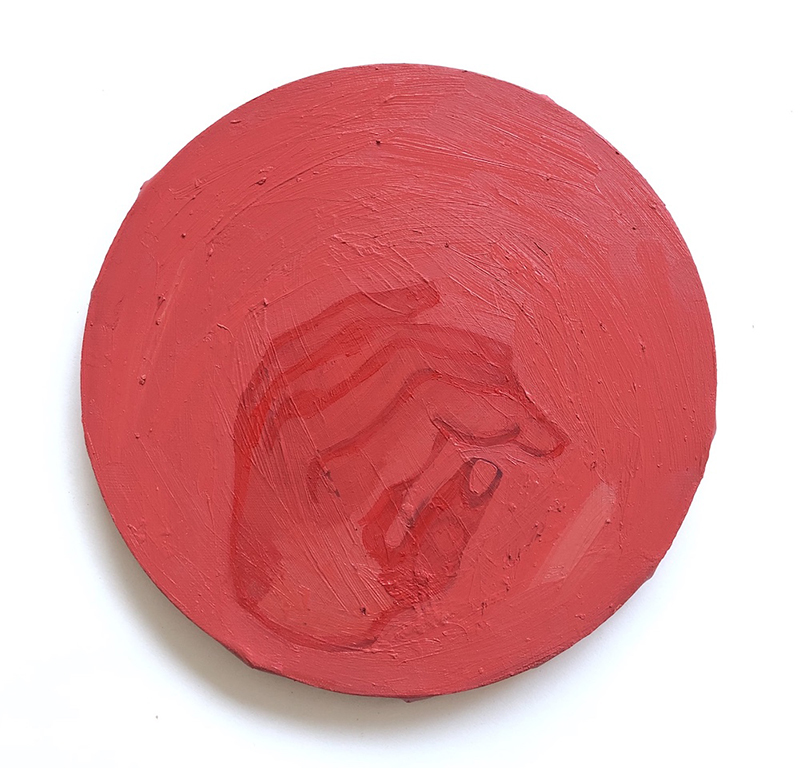
Soil Moon Hand. Oil on canvas. Diameter 30 cm.
Think of the biggest professional risk you’ve taken. What helped you take that risk?
In the beginning of 2019, I was in a duo show with one of our great and well known Danish artists – Claus Carstensen. Amongst others he works figuratively, and I wanted to respond confrontationally and narratively to his paintings, so I took up working figuratively too. I had only four months to produce new work, and was under a lot of pressure. I even switched to acrylics, instead of the familiar oils, to cut down drying time. I ended up showing eight portraits of downward facing, hanged persons and one large butterfly, as a response to five of his monumental, aggressive and screaming primates.
Exhibiting with an artist of his caliber naturally involved more VIPs, museum people and collectors, which added furthermore pressure to the experience. We also hosted a VIP night, with food and drinks and to cut costs, I was in the kitchen cooking all night, the day before the show. The whole thing was insane, but fun to look back on. The risk was, of course, that I would not deliver work that matched his. However it turned out great and it was definitely worth the risk, as well as a huge experience. I’m also grateful for the experience as a catalyst to work figuratively again.
Someone dear to me told me to listen for silence. I have found this advice essential and it has helped me listen to and trust my own inner voice.
What is the best piece of advice you’ve received? Why was it helpful?
Someone dear to me told me to listen for silence. I have found this advice essential and it has helped me listen to and trust my own inner voice.
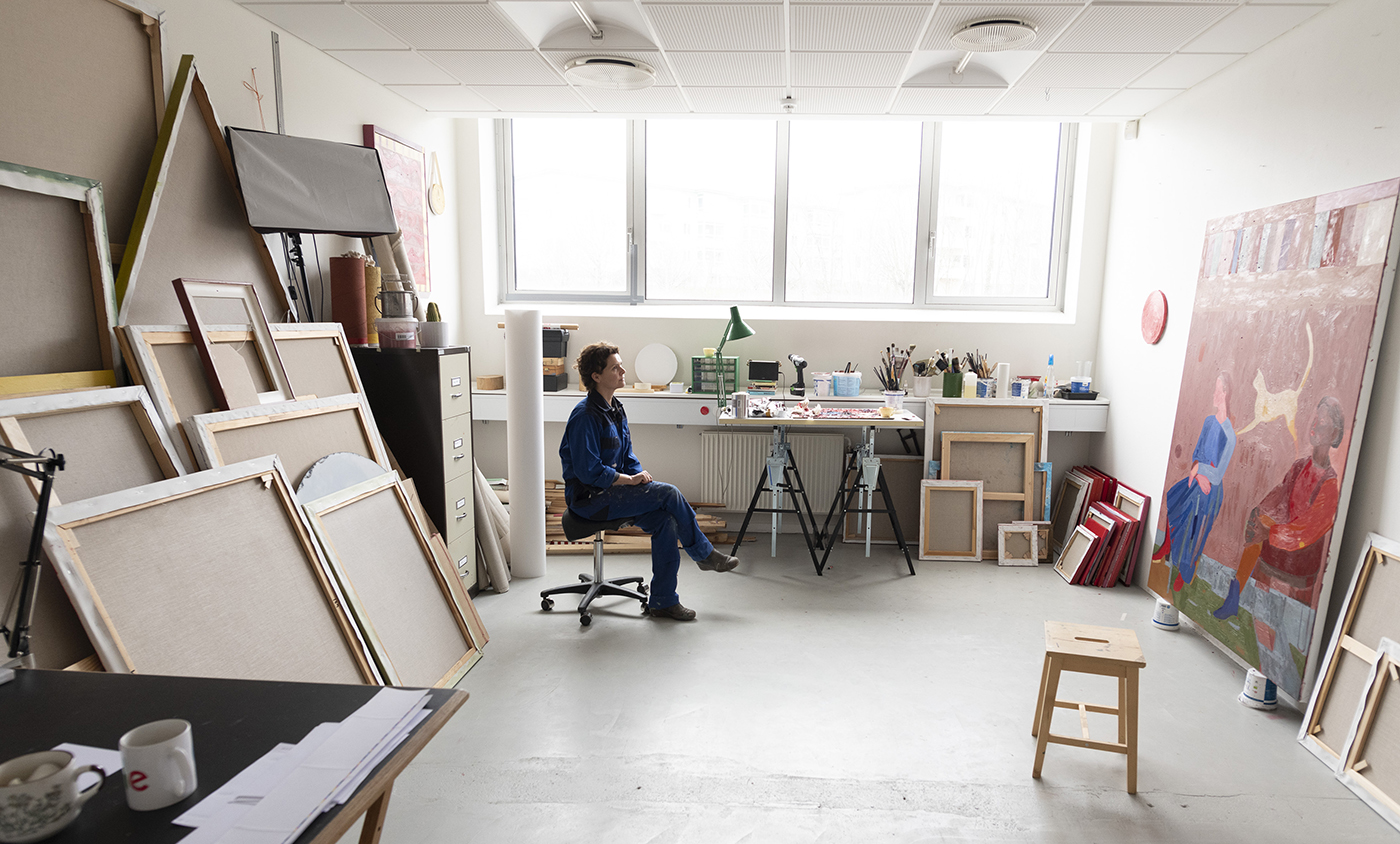
Studio view. Image courtesy Bente Foged Madsen.
Tell us about your studio, what kind of place is it? Could you describe your usual work day in the studio?
My studio is a 20 minute drive from my home and I go there as soon as I’ve sent my kids off to school. It is situated in a big old industrial building by the harbour in Aarhus right next to an active plant producing oil from nuts. We are an artist collective, with sixteen individual studios, which is perfect, since I can work in peace and still benefit from social lunches and coffee-breaks. Together we run an exhibition space called KH7 Artspace which is characterised by contemporary and experimental shows of both literature and performance, and more traditional essence. I spend a lot of time engaged in managing the physical space as well as the virtual (website) and all sorts of other things that are required to keep things running smoothly.
What are you working on now? What’s coming next season?
I just finished a long running project, which culminated in a red tone painting installation that I named “Soil Moon Hand”. Since last summer I have worked with the colour red and the motives of hands. I think hands are very interesting subjects as they are key to the evolutionary success of our species. Hands are the criteria for our modern and complex world, and they hold the will to act gently or with force. Similar to the mouth and lips, hands are the part of the body where most nerve-ends terminate, with direct impulses from the brain. Hands support the spoken language, and sometimes speak their own, making them extremely expressive.
As for new projects, I am in the early phase of exploring new topics and possibilities. Nothing is certain yet, but I will be broadening my palette.
For enquiries contact – maya@wibling.com
Before you go – you might like to browse our Artist Interviews. Interviews of artists and outliers on how to be an artist. Contemporary artists on the source of their creative inspiration.











Add Comment